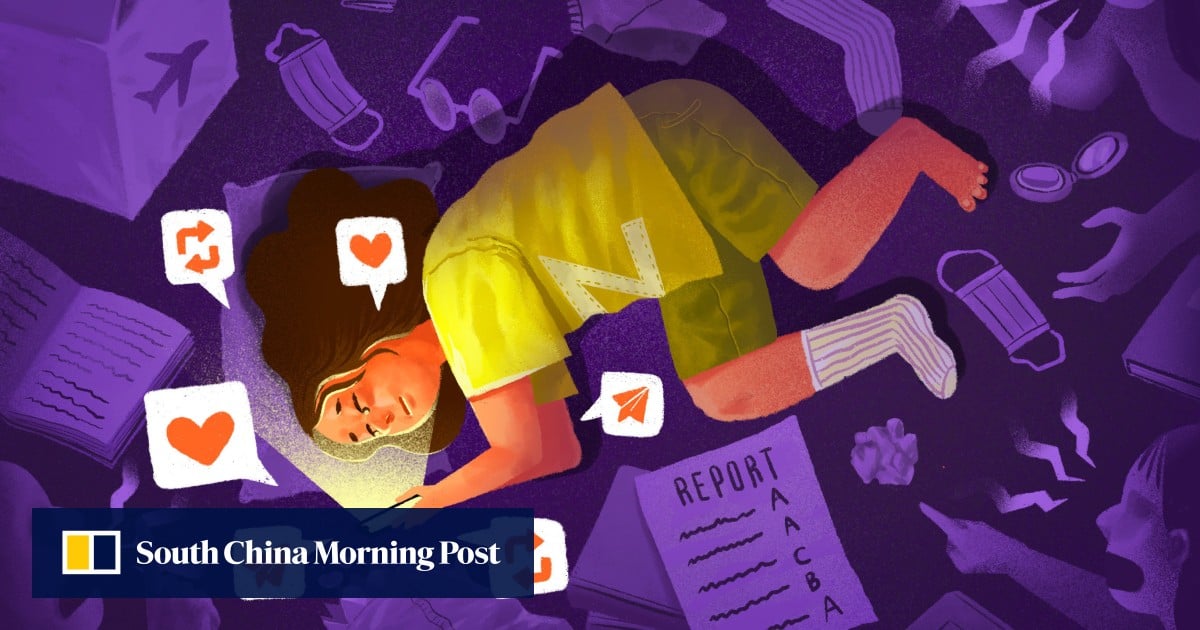While other emotions come to terms with Anxiety being a normal and necessary feeling for Riley, the film hints at the consequences when Anxiety becomes so persistent and severe that she completely takes over Riley’s mind.

In real life, anxiety is the body’s response to stress and feelings of fear and dread. And in Hong Kong, Generation Z is experiencing more than its fair share of those.

When overwhelming feelings of anxiety persist for three months to six months causing high levels of distress and disruption to daily living and functioning, the condition may be considered as an anxiety disorder, Mahtani says.
According to the World Health Organization (WHO), symptoms of anxiety disorders may include trouble concentrating or making decisions; feeling irritable, tense or restless; nausea or abdominal distress; heart palpitations; sweating, trembling or shaking; trouble sleeping; and having a sense of impending danger, panic or doom.
About four per cent of the world’s population has an anxiety disorder – 301 million people in 2019 – and of those only about a quarter seek help to treat it, the WHO says.

Cheng and Mahtani recommend applying behaviour-based approaches to anxiety.
Cheng offers emotionally focused therapy that allows a patient to enter the “foreign, strange, dangerous and terrifying places” of the mind with their therapist through in-depth conversations, enabling them to revise unhealthy thoughts.
Resourceful Gen Zs are also finding solutions themselves.

Louisa Wong is a 21-year-old student and poet. Her parents had been living as expats in the United States before they returned to Hong Kong to raise Wong. The family returned to the US in 2022 for Wong’s college education.
At the time, the need to adapt to a completely new environment worsened Wong’s anxiety.
She was recently diagnosed with borderline personality disorder, which shows up as having unstable interpersonal relationships and a distorted sense of self. This forced her to take leave from the Columbia University School of General Studies in New York, which is known for taking in non-traditional students who need more flexibility in their learning.
Wong has, since 2020, posted hundreds of vulnerable poems on her Instagram account @louisaspoetryy and has had her work published in books. Maintaining an online audience of nearly 80,000 followers often weighs on her mind.

At one point, she “fell out of love with posting online, fell back in love with it, [and] felt like a failure for losing followers and traction”, she says.
“Writing has been such a saviour for me throughout all of this because it is somewhere I can be free,” she says. “And if I choose to share it, it is not to garner attention or write the story of my life, but to let others use it as an outlet for their own emotions.”

For nine years, Kaul has been learning an Indian classical dance known as kathak, and she enjoys its therapeutic effect. She started developing an interest in psychology three years ago, and learned about Dance Movement Therapy (DMT). It promotes physical functioning, emotional well-being, cognitive health and social connectedness.

“Trapped emotions are stored in different parts of our body, and through movement these can get released which one should embrace and not be afraid of,” she says.
Kaul has found comfort in OCDAHK’s non-judgemental environment. Mahtani’s work has had a meaningful impact not just on Kaul but also on the community that she serves.
Wong is thankful for her family’s support during her recovery.

She now knows, through self-awareness and reflection, how to recognise whether her anxieties are rational or irrational, a common indicator of whether a person has recovered from anxiety disorder.
Wong shares advice for those who are struggling with anxiety: “Being young creates a form of tunnel vision [about one’s future path] that is very difficult to break through.
“But I promise you, in life, there is so much more than the pain you may be feeling now. You have to believe in it because belief is what carries people through darkness.”

